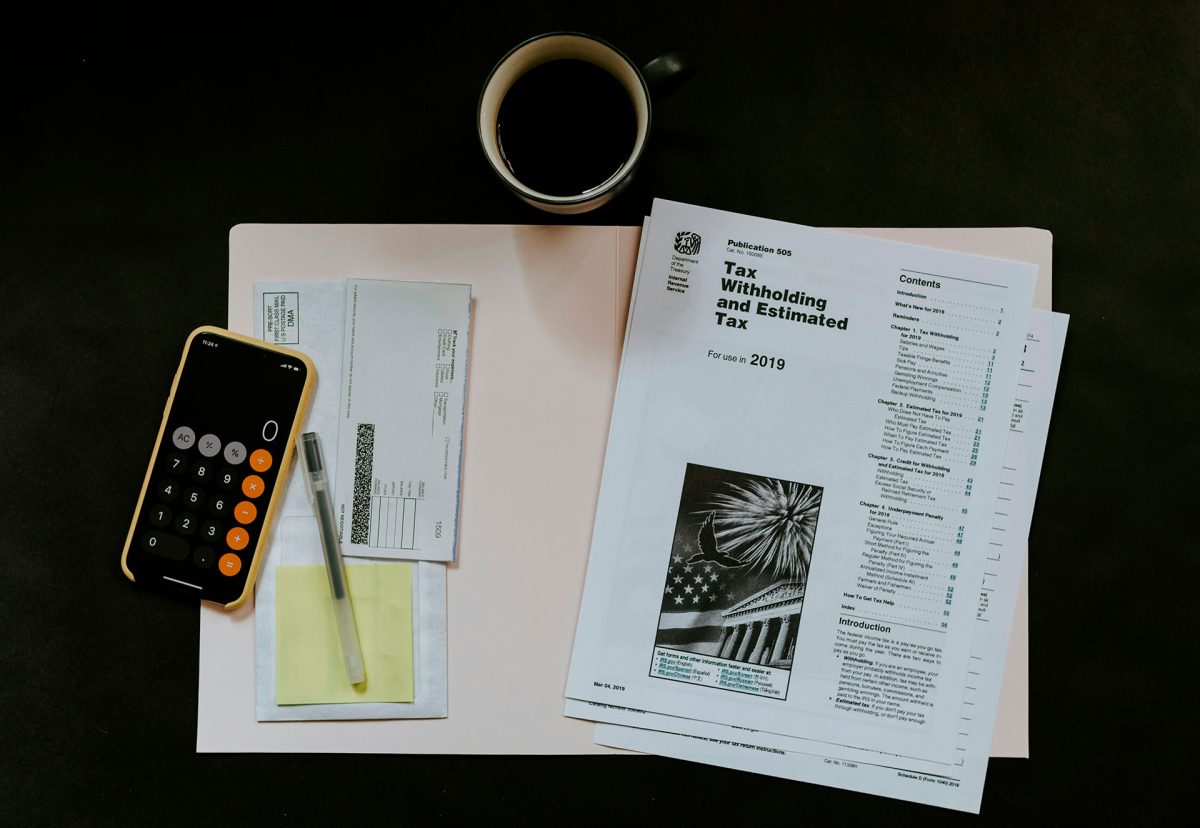A new report illustrates how federal agencies are using “human-centered design” to improve customer experience (CX) and save everyone time, effort and money
by Intelliworx
Many government processes are initiated by completing a form. You read the instructions, fill out the data, and submit the document – and then wait to hear about the next steps.
These forms tend to be long, complicated and take time to complete. The Office of Management and Budget (OMB) has called this a “time tax” on several occasions.
Our very own CEO Rob Hankey recently observed one such process up close. His wife recently attained U.S. citizenship, which involved completing many forms over years.
For example, she completed one form to enter the country on a fiancé visa. Then, once married, she completed a separate form to apply for a green card. Later, when she met the prerequisites to apply for citizenship, she filled out yet another form. All the forms went to the same government agency and asked her to re-enter the same data she had already provided.
This happens to millions of people every day. To put it into perspective, there are 430 agencies and sub-agencies in the federal government. Collectively, they field some 23,000 forms. Indeed, OMB estimates Americans spend 10.5 billion hours annually completing government forms.
That’s a pretty hefty “tax” on time.
The good news is, according to a July 2024 report by the Office of Information and Regulatory Affairs (OIRA) – Tackling the Time Tax – the government is making strides in cutting it.
CX and human-centered design
The government is cutting this “time tax” by focusing on concepts such as customer experience (CX) and human-centered design. These are buzzy terms with real roots in behavioral science.
The concept of CX looks at the sum of all the interactions a stakeholder has with a digital government medium in order to assess and improve the experience. Stakeholders are people like citizens, civil servants or foreign nationals with legitimate government business. Digital mediums include government forms, websites and mobile apps.
Human-centered design is one method for improving CX. The idea is that technology should just work intuitively because it’s designed to support the way people work. This is as opposed to forcing people to modify how they work to use a product.
Improving government CX starts with feedback
“A lot of the things that you see in this report start with stakeholder engagement, start with comments and rulemaking, people saying something at a listening session, people sending in a letter, people raising issues, engagement with focus groups, stakeholders, etc.”
That’s according to OIRA Associate Administrator Sam Berger, who was cited by NextGov/FCW, in an article about the report. He continued, “We hope that that encourages more people to provide that kind of feedback, because that’s really the lifeblood of our efforts.”
OIRA notes the process of improving CX is relatively frictionless. The report says agencies are finding they can remove the “administrative burdens” without affecting the “integrity” of these programs.
Are all these efforts working?
Berger outlined initial high-level results in a blog post – and these are impressive:
“These initiatives will help millions of individuals, families, and small businesses. For example, they will allow more than 5 million Americans to automatically renew their health coverage without filling out paperwork, saving them 2.5 million hours of their lives; disburse money three times faster to small businesses suffering in the wake of a natural disaster; reduce burdens on 350,000 employers a year seeking to verify potential employees’ eligibility to work; and eliminate nearly 200,000 hours of burden on low-income older and disabled Americans in the SSI program.”
Illustrating government CX in action
In the report, OIRA illustrates how several agencies are reconciling stakeholder needs and policies to fuel this digital transformation. While it details eight “burden reduction initiatives,” we’ve combed through the report and highlighted a few examples that stood out for us.
1. Digital transformation of small business loans
The Small Business Administration (SBA) “provides more than $2 billion in direct, low-interest loans to homeowners and small businesses harmed by natural disasters annually.” However, its programs were hampered by “antiquated systems and inconsistent standards.”
As a result, many small businesses waste time trying to decipher the requirements. Some resort to paying third-party consultants for help – which adds time and costs to the process.
After research and testing, the agency rolled out a “customer experience initiative called ‘MySBA.’” It has completely digitized the application process for applicants and also made managing high volumes of loan applications easier for civil servants.
The results are noteworthy too. To date, the SBA says it has processed more than 70,000 loan applications through MySBA. The process “takes 16.8 minutes to complete on average – a substantial reduction in burden – and can be completed entirely on a mobile phone.”
Perhaps even more impressive is the turnaround time on a decision. With MySBA, loans are approved in just 16 days pm average – down from the previous 28-day benchmark. Similarly, disbursement takes only about 30 days – down from the previous average of 105 days.
2. Digital transformation of grant notices in healthcare
The Department of Health and Human Services (HHS) offers a range of federal grants. It announces these opportunities with “notices of funding opportunities” (NOFOs). The problem is that grant-proposals are notoriously complicated.
For example, the report notes HHS analyzed a sample of 200 NOFOs and found the average length was more than 35,000 words spread out over 54 pages. Length breeds complexity which means 95% of these NOFOs required “graduate level reading ability.” Finally, each NOFO contained nine additional “non-standard forms or attachments” for completion.
HHS began to listen for feedback. It conducted 16 focus groups, a user experience (UX) study – along with in-depth interviews. The agency poured what it learned into simplifying the process and rolled out four prototype NOFOs.
The preliminary results are strong – these four prototypes have:
- 60% fewer words on average;
- 25% reduction in the requisite reading comprehension level;
- 27% fewer pages; and
- 31% reduction in application time on average.
The agency is aiming to build on this success by applying it to roughly 80 other NOFOs across eight divisions and is well-positioned to become the standard.
3. Digital transformation of employment eligibility
Millions of employers in the U.S. use E-Verify to satisfy their Form I-9 (Employment Eligibility Verification) requirements. Roughly 350,000 employers used this form in the last year or so. In addition, about 45 million prospective employees were screened for eligibility.
The challenge is that the process is manual, involves duplicating work efforts, and therefore fraught with errors. Typically, employees complete the form and send it to their employer. In turn the employer re-enters that data manually and compares it “with records available to the U.S. Department of Homeland Security (DHS) and the Social Security Administration (SSA).”
The effects of this challenge are measurably error-prone:
“For example, in FY 2023, 6.5% of E-Verify cases had data entry errors as a result of manual entry by the employer. Of these, 3% – amounting to roughly 420,000 prospective employees – had data mismatches that required the employer, the employee, SSA, and USCIS [U.S. Customs and Immigration Service] to take additional, time-consuming actions in order to resolve the discrepancies and complete the verification process.”
The government aimed to streamline this process by developing a self-serve way for prospective employees to enter their data for verification directly. To support this goal, the agencies involved conducted stakeholder research and usability testing, “with a focus on human-centered design,” to understand the process of employment verification.
This resulted in an initiative called “E-Verify+” which was fielded for testing. The preliminary results look promising, according to the report:
“Employees can electronically enter their own personal information to better support privacy, security, and more accurate results and reduce the number of mismatches caused by data entry errors by employers. In addition to allowing employees to enter their own I-9 data directly into E-Verify, mismatch alerts are first delivered to employees, rather than to the employer. If a mismatch occurs, employees receive immediate notice so they can resolve mismatches on their own without employer intervention and before referral to an SSA field office.”
E-Verify+ was made available to a sample of diverse employers to test in early 2024. These employers will provide feedback for improving the program – and then roll it out for every U.S. employer by year’s end.
Improving CX improves trust
Trust in government is at an all-time low – but these CX efforts will almost assuredly help. The government has said as much in multiple interviews and reports. And we couldn’t agree more.
In an article contributed to the Federal News Network, our CEO noted that trust is bigger than just the digital experience, but it can and does have an impact. So, while these digital transformation initiatives aren’t a panacea, they will go a long way toward rebuilding trust.
* * *
Intelliworx has helped more than 30 federal agencies transform static paper forms into dynamic digital experiences. The company is a certified service-disabled veteran-owned small business and is FedRAMP-authorized. Contact us for a no-obligation demo.
If you enjoyed this post, you might also like:
Put the telework debate to rest by focusing on productivity



